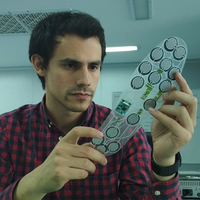Biotechnology & medicine
Qiaomei Fu
Unveiling the genetic history of modern humans

Asia Pacific
Ajay Prakash Kottapalli
Nature-inspired miniaturized sensors that create new standard of care in biomedical flow sensing.

Europe
Kristof Szalay
His AI simulates the reaction of millions of virtual human cells vis-à-vis new treatments against cancer to predict their effectiveness

China
Guoyong Xu
Disease resistant crops that are also high yielding

Latin America
Facundo Noya
His smart insole prevents amputations by detecting the appearance of wounds and ulcers on the feet of diabetic people
